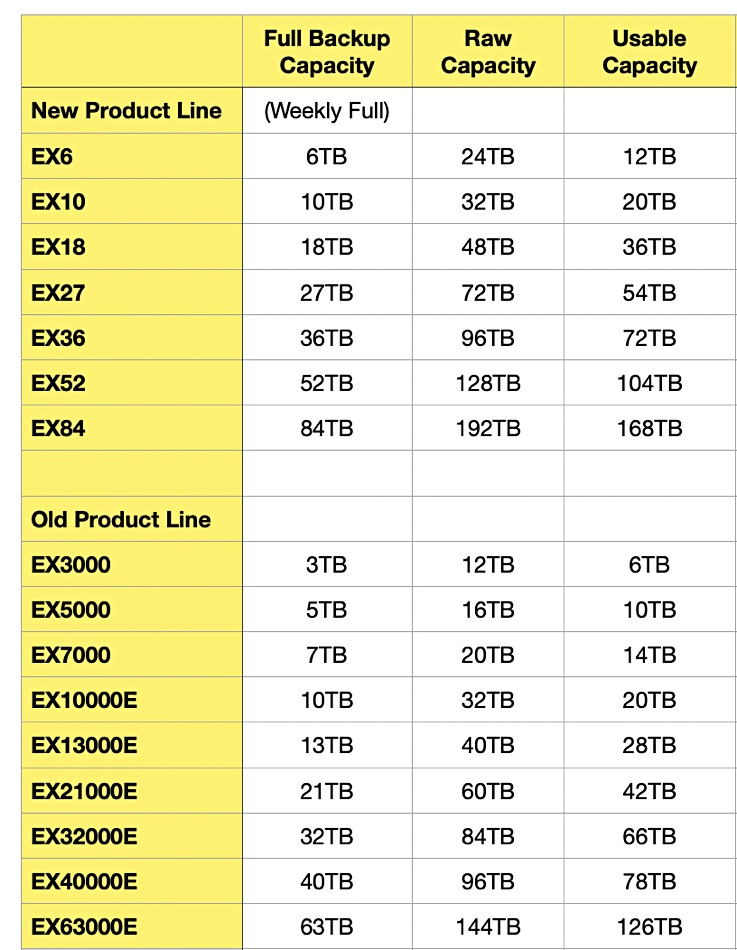ExaGrid has increased capacity in its deduplicating backup appliances and at the same time, cut the product portfolio from nine systems to seven. Appliances of any size can be mixed and matched in a 32-appliance cluster.

Bill Andrews, President and CEO of ExaGrid, said in a statement: “ExaGrid continues to build on its scale-out architecture and we are excited to announce our largest system to date.
“In addition to offering the largest backup system in the industry, we also offer the only system with a disk-cache Landing Zone that is tiered to a long-term retention repository and the only approach to deduplication that doesn’t negatively impact backup and restore performance, which differentiates us from first-generation storage products – inline scale-up deduplication appliances such as Dell EMC Data Domain and HPE StoreOnce.”
ExaGrid doesn’t discuss hardware speeds and feeds but we guess that the new appliance models have newer and more powerful processors and larger capacity disks than the superseded line. The old EX3000 to EX63000E product line used 2TB, 4 and 6TB drives. The disk makers are now supplying drives at 20TB capacities, and the market sweet spot is currently 14TB -16TB.
A single scaled-out clustered system of 32 EX84 appliances can take in up to 2.69PB full backup with 43PB of logical data, making it the largest backup storage system in the industry. This new EX84 occupies 33 per cent less rack space than the previous top end EX63000E model.
Dell EMC Data Domain is ExaGrid’s biggest competitor. The largest Data Domain system is the DD9800 with 1PB of usable capacity. This is larger than Exagrid’s high-end EX84 and its 168TB usable capacity. But stick 32 EX84s together in a cluster and the usable capacity is 5.37PB, which is roughly five times more than Data Domain.
ExaGrid’s new appliances can be installed in existing clusters and are available immediately. No pricing information was revealed.








